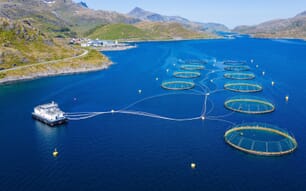According to the Scottish Salmon Producers’ Organisation’s (SSPO) Fish Health Management Annual Report, over the past 2 years’ industry spend on fish health management shot up from £26m to £49.4m.
Despite this, spend on medicinal treatments dropped from £18.5m in 2015-16 to £13.8m last year – largely due to an increase in the use of cleanerfish and mechanical methods to control sea lice.
And, despite the increasing expenditure required by these methods - £14 million was spent on cleanerfish programmes, up from £5.2 million in 2015; and £21 million was spent on mechanical treatments – the change of strategy also appears to be bearing fruit, with the SSPO reporting that by the end of 2016, sea lice management undertaken in line with the industry’s Code of Good Practice was the best it had been for some years.
Scott Landsburgh, chief executive of SSPO, said: “Managing sea lice on the farms has become more challenging in the past few years, with higher water temperatures and an increase in the incidences of algal blooms and jellyfish. However, the investment in cleanerfish like wrasse and lumpfish as well as the new machinery to remove lice is proving successful and looks encouraging for the future. We will always need responsible access to medicines as part of a multi-faceted strategy, but this has been a significant turn-around for the salmon farmers.
All the lumpfish used in Scottish sites are farmed and the production of farmed wrasse is increasing. And, although question marks remain about the current need to supplement farmed wrasse with wild-caught ones, farmed wrasse production – which takes place at Machrihansih and Ardtoe – is increasing.
Despite these advance, Landsburgh reflects that there is still a need to maintain medicinal options.
“As we are dealing with livestock, there will always be a requirement for the use of medicinal treatments and it is important that we ensure long term responsible access to medicines which give the fish some protection. Maintaining a range of options like the in-feed SLICE treatment is a key part of the industry’s fish health management strategy,” he adds.



